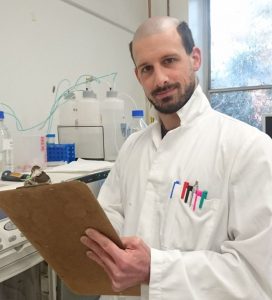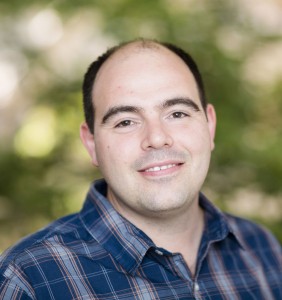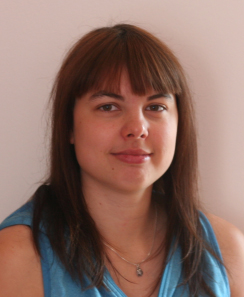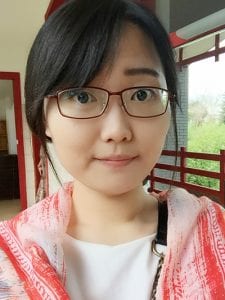People
PI/CI
Dr Staffan Persson
 Staffan Persson completed his PhD in Dec, 2003, which was a joint degree between Lund University (Sweden) and North Carolina State University (US). He then pursued a postdoc at the Carnegie Institution of Washington at Stanford University 2004-2007. Staffan was appointed as a Max-Planck Group Leader at the MPI for Molecular Plant Physiology in Potsdam in 2008, where he stayed until 2014. Since Jan 2015 Staffan is a R@MAP Professor at the School of BioSciences at University of Melbourne, and recently became an ARC Future Fellow (level 3). The research in his group aims at understanding how plants are producing cellulose, which is the most abundant biopolymer on Earth and that is a raw material for many applications in our society.
Staffan Persson completed his PhD in Dec, 2003, which was a joint degree between Lund University (Sweden) and North Carolina State University (US). He then pursued a postdoc at the Carnegie Institution of Washington at Stanford University 2004-2007. Staffan was appointed as a Max-Planck Group Leader at the MPI for Molecular Plant Physiology in Potsdam in 2008, where he stayed until 2014. Since Jan 2015 Staffan is a R@MAP Professor at the School of BioSciences at University of Melbourne, and recently became an ARC Future Fellow (level 3). The research in his group aims at understanding how plants are producing cellulose, which is the most abundant biopolymer on Earth and that is a raw material for many applications in our society.
Email: Staffan.persson@unimelb.edu.au
Postdocs
Dr Marc Somssich
 My research: I received my Dr. rer. nat. (PhD-equivalent) for my work on the CLAVATA-WUSCHEL signalling pathway, the central regulatory circuit of stem cell homeostasis in plants1. Since joining the Persson Lab at the University of Melbourne, I have specialized in studying cell wall architecture in response to different developmental stimuli, or pathogenic attack. Concerning the first part, we have identified a transcription factor capable of inducing a primary(-like) cell wall in place of the secondary cell wall in cooperation with the Mitsuda lab2. An important step towards identifying the developmental switches controlling primary cell wall synthesis. With Dmitry Suslov we have investigated the impact that the complex interplay between gravisensing and brassinosteroid signalling has on cell wall architecture3. I have since focused on establishing a novel microscopy technique, involving a custom-built vertical-stage microscope and hand-made microscopy-slides that support growth of seedlings directly on them, to live-monitor the effects of pathogenic attacks on the cell walls of living, growing roots.
My research: I received my Dr. rer. nat. (PhD-equivalent) for my work on the CLAVATA-WUSCHEL signalling pathway, the central regulatory circuit of stem cell homeostasis in plants1. Since joining the Persson Lab at the University of Melbourne, I have specialized in studying cell wall architecture in response to different developmental stimuli, or pathogenic attack. Concerning the first part, we have identified a transcription factor capable of inducing a primary(-like) cell wall in place of the secondary cell wall in cooperation with the Mitsuda lab2. An important step towards identifying the developmental switches controlling primary cell wall synthesis. With Dmitry Suslov we have investigated the impact that the complex interplay between gravisensing and brassinosteroid signalling has on cell wall architecture3. I have since focused on establishing a novel microscopy technique, involving a custom-built vertical-stage microscope and hand-made microscopy-slides that support growth of seedlings directly on them, to live-monitor the effects of pathogenic attacks on the cell walls of living, growing roots.
About me: I am a trained developmental biologist with a strong focus on advanced fluorescence microscopy. During my time as a PhD-student in the lab of Prof Rüdiger Simon at the University of Düsseldorf I established a multi-dimensional fluorescent spectroscopy method to measure protein complex formations and rearrangements live and in single living plant cells4. I furthermore employed this technique to study changes in complex stoichiometry in response to different stimuli, such as pathogenic elicitors4. Since joining Prof Staffan Persson’s Cell Biology Lab at the University of Melbourne, I have used microscopic and molecular biology tools to study cell wall architecture and maintenance in response to developmental changes and external stimuli. I still enjoy experimenting with new and different microscopy techniques, which is made possible by the Biological Optical Microscopy Platform (BOMP) here at the University. My work is supported through a postdoctoral research fellowship from the German Research Foundation (DFG), an Early Career Research Grant from the University of Melbourne and a Seed Grant from the Melbourne Uni Botany Foundation.
Email: marc.somssich@unimelb.edu.au
Twitter: @somssichm
Selected References:
See my publications on Google Scholar:
https://scholar.google.com.au/citations?user=-YhIzdMAAAAJ&hl=en
- Somssich M, Je B Il, Simon R, Jackson D. CLAVATA-WUSCHEL signaling in the shoot meristem. Development. 2016;143: 3238–3248. Available at doi:10.1242/dev.133645
- Sakamoto S, Somssich M, Nakata MT, Unda F, Atsuzawa K, Kaneko Y, et al. Complete substitution of a secondary cell wall with a primary cell wall in Arabidopsis. Nature Plants. Springer US; 2018;4: 777–783. Available at doi:10.1038/s41477-018-0260-4
- Somssich M, Vandenbussche F, Ivakov A, Funke N, Ruprecht C, Vissenberg K, et al. Brassinosteroids control gravitropism by changing cellulose orientation and mannan content in Arabidopsis hypocotyls. bioRxiv. 2019;: 1–37. Available at doi:10.1101/557777
- Somssich M, Ma Q, Weidtkamp-Peters S, Stahl Y, Felekyan S, Bleckmann A, et al. Real-time dynamics of peptide ligand-dependent receptor complex formation in planta. Sci Signal. 2015;8: 1–9. Available at doi:10.1126/scisignal.aab0598
Dr Edwin Lampugnani
 My research: My current work focuses on the development of a novel in planta protein-protein interaction method and the turn-over of proteins in a plant cell. I have also been exploring how cellulose is made in the different walls of the developing Arabidopsis flower; a superb system for studying organ development.
My research: My current work focuses on the development of a novel in planta protein-protein interaction method and the turn-over of proteins in a plant cell. I have also been exploring how cellulose is made in the different walls of the developing Arabidopsis flower; a superb system for studying organ development.
About me: I completed my PhD at Monash University (Australia) under the guidance of Prof. David R. Smyth in the field of developmental plant genetics using the model plant Arabidopsis thaliana. My PhD project involved examining how organ primordia are initiated in the flowers of Arabidopsis thaliana, and the genetic factors and pathways involved in this process. I have been able to show that petal development is triggered by the chemical hormone auxin. When the shape of flower buds is disrupted by mutation, auxin accumulation is affected and petals do not arise. Thus floral architecture is established by the finely-tuned interplay of growth gene and hormone action.
After I completed my PhD in 2011 I undertook a post-doctoral position with Assoc. Prof. Ed Newbigin and Prof Tony Bacic investigating the cell and molecular biology of cell wall synthesis with a particular emphasis on arabinan and xyloglucan biosynthesis. We used Nicotiana alata pollen tubes as a model to study cell wall biosynthesis because of their relatively simple structure and their ability to grow rapidly in culture. In 2014 I moved to the ARC Centre of Excellence in Plant Cell Walls where I continued to investigate the cell and molecular biology of cell wall synthesis, but this time with a particular emphasis on understanding how grasses make the two main non-cellulosic polysaccharides, mixed linkage (1,3;1,4)-β-glucan (β-glucan) and arabinoxylan, in order to manipulate cereal grain wall composition. In 2016 I joined the Persson Cell Wall biology research group where I am developing a number of novel technologies to study protein-protein interactions and protein turnover.
Email: Edwin.lampugnani@unimelb.edu.au
Selected References:
Lampugnani ER, Kilinc A and Smyth DR. (2013). Auxin controls petal initiation in Arabidopsis. Development; 140(1):185-194.
Lampugnani ER, Ho YY, Moller IE, Koh PL, Golz JF, Bacic A, Newbigin E (2016). A Glycosyltransferase from Nicotiana alata Pollen Mediates Synthesis of a Linear (1,5)-α-L-arabinan When Expressed in Arabidopsis. Plant Physiology; 170: 1962-1974.
Lampugnani ER†, Wilson SM†, Ho YY†, Van de Meene AML, Bacic A and Doblin MS (2015). Determining the subcellular location of (1→3, 1→4)-β-D-glucan and its synthesis machinery: insights into the synthesis mechanism. Plant Cell; 27:754-771.
Dr Ghazanfar Khan
 My Research: Plant biomass is largely composed of cell wall material. These rigid cell walls encase plant cells, and biosynthesis and dynamic rearrangements of cell walls therefore drive plant growth. Suboptimal nutrient availability is one of the major growth limiting factor for plants and causes extensive losses to agriculture. However, how nutrient availability affects cell walls is largely unknown. My research focuses on identification of cell wall modification in response to changes in nutrient availability and the genetic mechanisms involved in this process. I use advanced microscopic techniques to image cell walls in response to different nutrient concentrations. Additionally, I am setting up a genetic screen to identify genes involved in the regulation of cell walls in response to changes in nutrient availability.
My Research: Plant biomass is largely composed of cell wall material. These rigid cell walls encase plant cells, and biosynthesis and dynamic rearrangements of cell walls therefore drive plant growth. Suboptimal nutrient availability is one of the major growth limiting factor for plants and causes extensive losses to agriculture. However, how nutrient availability affects cell walls is largely unknown. My research focuses on identification of cell wall modification in response to changes in nutrient availability and the genetic mechanisms involved in this process. I use advanced microscopic techniques to image cell walls in response to different nutrient concentrations. Additionally, I am setting up a genetic screen to identify genes involved in the regulation of cell walls in response to changes in nutrient availability.
About me: I completed my Master in 2009 at the University of Paris Diderot, in the lab of Prof. Martin Crespi at the CNRS in Gif-sur-Yvette, France, where I subsequently worked until 2011. I investigated the role of microRNAs in the root development and architecture in Medicago trucatula. After my position in France, I moved to Switzerland, where I earned my PhD in 2016 at the university of Lausanne, under the supervision of Prof. Yves Poirier. During my PhD, I tackled the question of how plants coordinate the transport of different nutrients, and how plants respond to simultaneous stresses. Through a reverse genetic approach, I could identify key genes involved in the coordination of phosphate and zinc transport. I further identified the defence hormone jasmonic acid as a novel regulator of phosphate starvation signalling. My work provides therefore an insight into how the level of nutrient supply can impact the growth and defence of plants. This is of global importance, since phosphate-based fertilizers and plant pest protection are the two major cost factors of modern day agriculture. I joined the Persson Lab at the University of Melbourne in November 2016, as a Swiss National Science Foundation early postdoc mobility fellow.
Email: ghazanfar.khan@unimelb.edu.au
Selected references:
Khan GA, Vogiatzaki E, Glauser G, Poirier Y (2016) Phosphate Deficiency Induces the Jasmonate Pathway and Enhances Resistance to Insect Herbivory. Plant Physiology 171: 632–644
Khan GA*, Bouraine S*, Wege S, Li Y, de Carbonnel M, Berthomieu P, Poirier Y and Rouached H (2014) Coordination between zinc and phosphate homeostasis involves the transcription factor PHR1, the phosphate exporter PHO1 and its homologue PHO1;H3 in Arabidopsis. Journal of Experimental Botany. 65(3):871–884. * These authors contributed equally to this work.
Khan GA *, Bazin J *, Combier JP, Bustos-Sanmamed P, Debernardi JM, Rodriguez R, Sorin C, Palatnik J, Hartmann C, Crespi M and Lelandais‐Brière C, (2013). miR396 affects mycorrhization and root meristem activity in the legume Medicago truncatula. Plant Journal. 74(6):920–934. * These authors contributed equally to this work.
Dr Wenna Zheng
 My Research: Secondary cell walls provide plants with strength to grow toward sunlight and ensure water and nutrient transportation from the root. They also are the source of textiles, timber, and potentially biofuels used by human. There are three major different secondary cell wall components, namely cellulose, hemicelluloses, and lignin. The synthesis of these components is coordinated and under tight and complex regulation. I am interesting in how proteins such as transcription factors, AGC kinases and ROPs participate in regulating the dynamics of microtubules and cellulose synthases during secondary cell wall deposition. I also fascinated by how the vesicle-associated membrane proteins are involved in regulating the movement of cellulose synthase complex from the Golgi to the plasma membrane.
My Research: Secondary cell walls provide plants with strength to grow toward sunlight and ensure water and nutrient transportation from the root. They also are the source of textiles, timber, and potentially biofuels used by human. There are three major different secondary cell wall components, namely cellulose, hemicelluloses, and lignin. The synthesis of these components is coordinated and under tight and complex regulation. I am interesting in how proteins such as transcription factors, AGC kinases and ROPs participate in regulating the dynamics of microtubules and cellulose synthases during secondary cell wall deposition. I also fascinated by how the vesicle-associated membrane proteins are involved in regulating the movement of cellulose synthase complex from the Golgi to the plasma membrane.
About me: I got my bachelor degree (2008-2012) and Ph.D (2012-2019) at China Agricultural University. During my Ph.D study, I worked under the supervision of Professor Yan Guo. We focused on how plants respond to abiotic stresses. We found that defects in the medium subunit of the AP3 complex (AP3M) led to more rapid water loss and delayed stomatal closure, as well as hypersensitivity to drought stress. AP3M binds to and severs actin filaments and regulates F-actin dynamics, that participates in the sorting of sucrose exporter SUC4 to the tonoplast, and thereby regulates stomatal closure in Arabidopsis thaliana. Our findings indicate that the conserved F-actin binding activity of AP3M is required for the precise localization of AP3-dependent cargoes. I joined the Persson Lab at the University of Melbourne to study the mechanism of secondary cell wall synthesis in February 2020.
Email: wenna.zheng@unimelb.edu.au
Selected references:
Wenna Zheng, Yuxiang Jiang, Xiangfeng Wang, Shanjin Huang, Ming Yuan, Yan Guo (2019) AP3M harbors actin filament binding activity that is crucial for vacuole morphology and stomatal closing in Arabidopsis. Proceedings of the National Academy of Sciences of the United States of America. 116 (36), 18132-18141. Available at doi: 10.1073/pnas.1901431116.
Dr Felix Ruhnow
https://scholar.google.com.au/citations?user=rC-FPVoAAAAJ&hl=en
https://findanexpert.unimelb.edu.au/profile/824628-felix-ruhnow
PhD students
Jacqueline Nowak
 My research: My current research interests are the interaction and dynamics of cytoskeletal components like actin filaments and microtubules in plant cells. Therefore, I work with labelled images from techniques such as spinning disc confocal microscopy and an automated framework for segmenting and registering images in different cell types. Here, I also try to expand the functions of already existing algorithm in Python to track filaments over time. Another project is the development of a 3D cell wall root atlas from antibody-labelled root sections to investigate co-localization between epitopes. Furthermore, I am working with transcriptomics data to investigate second cell wall formation in Arabidopsis seedlings.
My research: My current research interests are the interaction and dynamics of cytoskeletal components like actin filaments and microtubules in plant cells. Therefore, I work with labelled images from techniques such as spinning disc confocal microscopy and an automated framework for segmenting and registering images in different cell types. Here, I also try to expand the functions of already existing algorithm in Python to track filaments over time. Another project is the development of a 3D cell wall root atlas from antibody-labelled root sections to investigate co-localization between epitopes. Furthermore, I am working with transcriptomics data to investigate second cell wall formation in Arabidopsis seedlings.
About me: I did my master study in Bioinformatics at the University of Potsdam in Germany (2012-2015) and meanwhile worked on a project at the Max-Planck Institute of Molecular Plant Physiology involving the extraction and analysis of networks from cytoskeletal components in plants. I wrote my master thesis at the Karolinska Institute in Stockholm, Sweden where I worked on identifying microRNAs from small RNA sequencing data in salamander in the absence of a reference genome. Finally, in 2016 I started my PhD at the University of Melbourne and the University of Potsdam/Max-Planck Institute of Molecular Plant Physiology as first joint PhD student between those institutes, where I combine both my experience in image processing and transcriptomics data analysis.
Email: JNowak@mpimp-golm.mpg.de
Selected References:
Breuer D, Nowak J, Ivakov A, Somssich M, Persson S, Nikoloski Z. (2017) System-wide organization of actin cytoskeleton determines organelle transport in plant cells. Proc Natl Acad Sci U S A. 114: E5741-E5749.
Yu Y*, Wu S*, Nowak J*, Wang G, Han L, Feng Z, Mendrinna A, Ma Y, Wang H, Zhang X, Tian J, Dong L, Nikoloski Z, Persson S, Kong Z. (2019) Live-cell imaging of the cytoskeleton in elongating cotton fibres. Nature Plants. 5(5):498-504.
Song Y, Li G, Nowak J, Zhang X, Xu D, Yang X, Huang G, Liang W, Yang L, Wang C, Bulone V, Nikoloski Z, Hu J, Persson S, Zhang D. (2019) The Rice Actin-Binding Protein RMD Regulates Light-Dependent Shoot Gravitropism. Plant Physiol. 181(2):630-644.
Pawel Gluza
 My research: The nucleotide sugars, which constitute the building bricks of cell wall polysaccharides and glycan residues of glycoproteins and glycolipids, are most often synthesized in the cytosol, imported into the Golgi lumen by nucleotide sugar transporters (NSTs) and incorporated into substrates by glycosyltransferases (GTs). Surprisingly, recent studies have shown that while some NSTs show a broad substrate specificity in vitro, in plant cells they can have impact only on specific sugar polymers, hinting at the possibility that substrates are channelled by NST complexes assembled in conjunction with corresponding GTs. In my project I combine various protein-protein interaction studies, cutting edge microscopy, mass spectrometry and preparations of native complexes from Golgi-enriched samples to provide a full overview of the NSTs-GTs interplay in plant cells.
My research: The nucleotide sugars, which constitute the building bricks of cell wall polysaccharides and glycan residues of glycoproteins and glycolipids, are most often synthesized in the cytosol, imported into the Golgi lumen by nucleotide sugar transporters (NSTs) and incorporated into substrates by glycosyltransferases (GTs). Surprisingly, recent studies have shown that while some NSTs show a broad substrate specificity in vitro, in plant cells they can have impact only on specific sugar polymers, hinting at the possibility that substrates are channelled by NST complexes assembled in conjunction with corresponding GTs. In my project I combine various protein-protein interaction studies, cutting edge microscopy, mass spectrometry and preparations of native complexes from Golgi-enriched samples to provide a full overview of the NSTs-GTs interplay in plant cells.
About me: I have completed my MSc and BSc studies while being a part of Department of Cellular Molecular Biology at the University of Wroclaw. Here, I researched the physiological properties of FtsH4 protease and the changes that its knockout imposes on the Arabidopsis mitochondrial sub-proteome. During my MSc studies I was also granted a chance to spend an internship at the Max Planck Institute of Molecular Plant Physiology in Potsdam, Germany, where I was involved in a project aiming to create a novel method of studying interactomes in plants. After my graduation, I applied for the International Max Planck Research School and was offered a position as a PhD candidate in the freshly launched Melbourne-Potsdam joint PhD programme.
Email: pgluza@student.unimelb.edu.au
Selected References:
Ebert B, Birdseye D, Liwanag AJM, Laursen T, Rennie EA, Guo X, Catena M, Rautengarten C, Stonebloom SH, Gluza P, Pidatala VR, Andersen MCF, Cheetamun R, Mortimer JC, Heazlewood JL, Bacic A, Clausen MH, Willats WGT, Scheller HV. (2018) The Three Members of the Arabidopsis Glycosyltransferase Family 92 are Functional β-1,4-Galactan Synthases. Plant Cell Physiol. 59(12):2624-2636
Jana Verbančič
 My research: Cell walls represent the single largest investment of the plant´s carbon resources used for growth. I am interested in how plants use specific sugar-signalling metabolites to decide how, when and where to invest this carbon capital. Since primary cell walls are largely comprised of cellulose, which is made by cellulose synthase (CesA) complexes, I am looking at their trafficking to and from the plasmalemma and interactions in conditions, where carbon status is altered. I use a novel stable-isotope (13C) labelling technique for flux analysis, mass spectrometry, confocal microscopy and protein-protein interaction methods.
My research: Cell walls represent the single largest investment of the plant´s carbon resources used for growth. I am interested in how plants use specific sugar-signalling metabolites to decide how, when and where to invest this carbon capital. Since primary cell walls are largely comprised of cellulose, which is made by cellulose synthase (CesA) complexes, I am looking at their trafficking to and from the plasmalemma and interactions in conditions, where carbon status is altered. I use a novel stable-isotope (13C) labelling technique for flux analysis, mass spectrometry, confocal microscopy and protein-protein interaction methods.
About me: I finished my bachelor and master studies in Biochemistry at the University of Ljubljana in Slovenia (2010-2016). I was characterizing and researching the mechanism of action of the protein mixed lineage kinase domain-like (MLKL) in E. coli and HEK293T cells. MLKL acts in a programmed cell death pathway, called necroptosis or TNF-induced necrosis and high levels of this protein and another kinase, RIP3, are associated with different inflammatory diseases in vertebrates. At the end of 2015 I completed an internship at the Max Planck Institute of Molecular Plant Physiology (MPI-MP) in Potsdam, Germany, where I discovered the world of plants. In December 2016 I started my joined PhD as a project between the MPI-MP/University of Potsdam and University of Melbourne.
Email: jverbancic@student.unimelb.edu.au/verbancic@mpimp-golm.mpg.de
Selected References:
Verbančič J, Lunn JE, Stitt M, Persson S. (2018) CarbonSupply and the Regulation of Cell WallSynthesis. Mol Plant. 11(1):75-94.
Hsiang-Wen Chen
 My research: My project is to reveal how microtubules, cell plate, and cellulose synthesis are coordinated during cell division. I will also investigate how certain proteins that interact with microtubules and cellulose synthase contribute to this process. I will utilize high-end confocal microscopy, electron microscopy, protein structural estimates and in vitro based biochemical analyses to investigate the above.
My research: My project is to reveal how microtubules, cell plate, and cellulose synthesis are coordinated during cell division. I will also investigate how certain proteins that interact with microtubules and cellulose synthase contribute to this process. I will utilize high-end confocal microscopy, electron microscopy, protein structural estimates and in vitro based biochemical analyses to investigate the above.
About me: I am a fan of the dynamic and vivid movement of plants. Aside from tropism and nastic movements, I am especially interested in a helical and constitutive plant nutation, called circumnutation. Circumnutation is thought to be important for plant shoot climbing and root penetrating although the driven force of this movement is still under debate. To find out the mystery of this phenomena, I started my path to become a plant scientist. My masters research (National Taiwan University, Department of Agronomy, Taiwan) was to uncover the hormone signaling transduction pathway of the light-induced wavy-root morphology of Oryza Sativa. We also found that environmental stimuli can alter circumnutation patterns and eventually cause different phenotypes in rice seminar root. To be more properly trained in scientific thinking, I became a research assistant (Institute of Plant and Microbial Biology, Academia Sinica, Taiwan) after I was awarded my masters degree. My main project was to identify the molecular mechanisms of light-regulated alternative splicing in Physcomitrella patens by using RNAseq.
Currently, I am a Ph.D. student in the joint program of the University of Melbourne (Australia) and the University of Postdam/Max-Planck Institute of Molecular Plant Physiology (Germany). I aim to gain deep knowledge about cell wall synthesis as well as cell biology during my Ph.D. period.
Email: hsiangc@student.unimelb.edu.au
References
Chen H.W., Shao K.H., Wang S.J. (2016) Light-mediated modulation of helix angle and rate of seminal root tip movement determines root morphology of young rice seedlings. Plant Signaling & Behavior.
Chen H.W., Shao K.H., Wang S.J. (2015) Light-modulated seminal wavy roots in rice mediated by nitric oxide-dependent signaling. Protoplasma:1-14.
Chen HW, Persson S, Grebe M, McFarlane HE. (2018) Cellulose synthesis during cell plate assembly. Physiol Plant. 164(1):17-26.
Mike Ogden
 Research: Soil nutrients, such as phosphorus, nitrogen, and sulfur, are essential for plant growth. When plants are grown in nutrient-deficient soil, root growth and architecture are drastically altered. As each plant cell is surrounded by a complex and dynamic cell wall, it therefore follows that changes in root architecture caused by nutrient deficiency should be mediated by changes in cell wall composition and biosynthesis. My research aims to identify and characterize the molecular mechanisms involved in cell wall modification in response to external nutrient availability. I will use advanced microscopy and phospho-proteomic analyses to characterize changes in cell wall biosynthetic enzyme activity during nutrient deficient growth. Comprehensive metabolite profiling will be undertaken to assess how metabolite levels change under varying degrees of nutrient availability. Additionally, mutants that show hypersensitivity to high nutrient levels will be investigated to identify pathways which link nutrient signaling to cell wall composition. Knowledge gained from this research may provide a basis for improving plant growth in nutrient-deficient soils.
Research: Soil nutrients, such as phosphorus, nitrogen, and sulfur, are essential for plant growth. When plants are grown in nutrient-deficient soil, root growth and architecture are drastically altered. As each plant cell is surrounded by a complex and dynamic cell wall, it therefore follows that changes in root architecture caused by nutrient deficiency should be mediated by changes in cell wall composition and biosynthesis. My research aims to identify and characterize the molecular mechanisms involved in cell wall modification in response to external nutrient availability. I will use advanced microscopy and phospho-proteomic analyses to characterize changes in cell wall biosynthetic enzyme activity during nutrient deficient growth. Comprehensive metabolite profiling will be undertaken to assess how metabolite levels change under varying degrees of nutrient availability. Additionally, mutants that show hypersensitivity to high nutrient levels will be investigated to identify pathways which link nutrient signaling to cell wall composition. Knowledge gained from this research may provide a basis for improving plant growth in nutrient-deficient soils.
About me: I earned my Bachelor of Science (Honours) from the University of Prince Edward Island in Canada, and my Master of Science from McGill University in Montreal, Canada. At McGill University, my research project involved investigating the molecular pathways which target pectins from the Golgi to specific plasma membrane domains where they are secreted to the cell wall. I was accepted into the Melbourne-Potsdam joint PhD programme between the University of Melbourne and the Max Planck Institute of Molecular Plant Physiology. My research is a collaborative project between the labs of Professors Roessner and Persson (University of Melbourne), and Hoefgen (Max Planck Institute).
Email: ogdenm@student.unimelb.edu.au
References
Ogden, M., and Lacroix, C. 2017. Comparative development of simple and compound leaves in the genus Cecropia. Botany. 95(2): 185-193.
Matos ÂP, Kauffman A, Vickery C, Naegeli K, Strittmatter L, Sybirna A, van Blijswijk J, Adlung L, Berbasova T, Enterina J, Eismann L, Tierney B, Jordi J, Zhu L, Verkuijl S, Tallorin L, Wehling A, Ogden M, Lammel S, Hasslacher MK, Wuelfroth P, Neumann S, Tidona C, Betz UAK. (2020) Synthetic Biology Category Wins the 350th Anniversary Merck Innovation Cup. Trends Biotechnol. 38(1):1-4.
Ogden M, Hoefgen R, Roessner U, Persson S, Khan GA. (2018) Feeding the Walls: How Does Nutrient Availability Regulate Cell Wall Composition? Int J Mol Sci. 19(9). pii: E2691.
Huizhen Xu
My research: Secondary cell walls provide plants with mechanical support and is the major renewable natural resource of plant biomass. Cellulose is the major component of secondary cell walls. My research is mainly about how phosphorylation of secondary cell wall cellulose synthases affect the synthesis of cellulose. I will use the VND7 inducible system to visualize the secondary cell wall synthesis process in living cells. I am also interested in how xylan and POM2/CSI1 influence the speed and direction of secondary cell wall CSCs during cellulose production.
About me: I finished my bachelor studies at Soochow University in 2013, and continued my master research in food biotechnology at China Agricultural University till 2015. My master research is about the mechanisms of how transcription factor Colorless None-Ripening (CNR) regulate tomato fruit ripening through promoter methylation. After graduation, I worked in Archer Daniels Midland Company (ADM) for about 2 years. In February 2018, I started my Ph.D. research at the University of Melbourne, and I want to keep exploring the mystery of plants, especially the synthesis of secondary cell wall.
Liu Wang
 My research: Two plant-specific proteins, companion of cellulose synthase 1 and 2 (CC1 and CC2) are components of cellulose synthase complexes (CSCs) and can protect cellulose synthesis capacity during salt stress. However, how CC proteins function and whether can we modify CC proteins to improve salt tolerance of plants still remain unclear. I will explore how changes in the phosphorylation of CC proteins influence their function, cellulose synthesis and salt tolerance of plants. I will also identify whether the function of CC proteins in response to salt stress works via the ABA pathway.
My research: Two plant-specific proteins, companion of cellulose synthase 1 and 2 (CC1 and CC2) are components of cellulose synthase complexes (CSCs) and can protect cellulose synthesis capacity during salt stress. However, how CC proteins function and whether can we modify CC proteins to improve salt tolerance of plants still remain unclear. I will explore how changes in the phosphorylation of CC proteins influence their function, cellulose synthesis and salt tolerance of plants. I will also identify whether the function of CC proteins in response to salt stress works via the ABA pathway.
About me: During my master study at China Agricultural University (2015-2018), I majored in Food Biotechnology and I focused on exploring the functions of mitogen-activated protein kinases (MAPKs) in tomato. My research program was mainly about exploring the functions of SlMAPK1/3 in response to drought stress in tomato plants. We found that SlMAPK1/3 are involved in drought response by activating antioxidant enzymes, reducing oxidative damage, and modulating transcription of some stress-related genes.
Currently, I am a PhD student sponsored by China Scholarship Council and the University of Melbourne. I aim to study more about how plants respond to abiotic stresses and to establish means to improve salt tolerance of plants via a new pathway that is directly connected to cell wall synthesis.
Email: liu.wang@student.unimelb.edu.au
References:
Wang, L.; Zhao, R.; Zheng, Y.; Chen, L.; Li, R.; Ma, J.; Hong, X.; Ma, P.; Sheng, J.; Shen, L. (2017). SlMAPK1/2/3 and antioxidant enzymes are associated with H2O2-induced chilling tolerance in tomato plants. Journal of Agricultural and Food Chemistry, 65 (32), 6812-6820.
Wang, L.; Chen L.; Li, R.; Zhao, R.; Yang M.; Sheng, J.; Shen, L. (2017). Reduced drought tolerance by CRISPR/Cas9-mediated SlMAPK3 mutagenesis in tomato plants. Journal of Agricultural and Food Chemistry, 65 (39), 8674-8682.
Wang, L.; Zhao, R.; Li, R.; Yu, W.; Yang M.; Sheng, J.; Shen, L. (2017). Enhanced drought tolerance in tomato plants by overexpression of SlMAPK1. Plant Cell, Tissue and Organ Culture, 2018, 133 (1), 27-38.
Fiona Kang
 My research: Arabinan is a pectic polysaccharide that is thought to play a role in plant cell wall plasticity and desiccation tolerance. Using an emerging genetic model system, Marchantia polymorpha, my project aims to characterise the glycosyltransferase (GT) responsible for the synthesis of (1,5)-α-arabinan, called arabinosyltransferase (AraT). M. polymorpha’s short life cycle, ease of propagation and ease of genetic manipulation makes it an attractive organism to unravel the complex process of cell wall polysaccharide synthesis. M. polymorpha has two homologs of the putative AraTs found in Arabidopsis thaliana and Nicotiana alata, called ARABINAN DEFICIENT-LIKE 1 (ARADL1) and ARADL2. My research will investigate the function of these genes using molecular genetic tools such as CRISPR and amiRNA technology and explore the potential for the presence of an arabinan biosynthetic complex using protein-protein interaction assays.
My research: Arabinan is a pectic polysaccharide that is thought to play a role in plant cell wall plasticity and desiccation tolerance. Using an emerging genetic model system, Marchantia polymorpha, my project aims to characterise the glycosyltransferase (GT) responsible for the synthesis of (1,5)-α-arabinan, called arabinosyltransferase (AraT). M. polymorpha’s short life cycle, ease of propagation and ease of genetic manipulation makes it an attractive organism to unravel the complex process of cell wall polysaccharide synthesis. M. polymorpha has two homologs of the putative AraTs found in Arabidopsis thaliana and Nicotiana alata, called ARABINAN DEFICIENT-LIKE 1 (ARADL1) and ARADL2. My research will investigate the function of these genes using molecular genetic tools such as CRISPR and amiRNA technology and explore the potential for the presence of an arabinan biosynthetic complex using protein-protein interaction assays.
About me: I completed a Bachelor of Science (Hons) majoring in Zoology at Monash University with Assoc. Prof David Chapple. In trying to gain more technical skills in the laboratory, I began volunteering in Prof Staffan Persson’s lab under the supervision of Dr Edwin Lampugnani where I am now undertaking a Master of Philosophy (Science) degree.
Orianne Montulet
 My research: The plant cell wall is a structural matrix, mainly composed of cellulose, that surrounds every cell and subsequently drives the growth of the entire plant. During my project, I will focus on two proteins associated with cellulose synthesis, with a focus on Companion of cellulose synthase (CC1). Here, I aim to figure out what the apoplastic part of CC1 does. I will also investigate one CC1 interacting protein that contains a LEA domain, known to protect plants against stresses. In collaboration with Liu Wang (PhD student in the Persson lab), we will try to understand the function of this protein and its potential role in cellulose synthesis under stress conditions. I aim to use protein-protein interaction methods, confocal microscopy, mass spectrometry and phenotypical analysis to address these questions.
My research: The plant cell wall is a structural matrix, mainly composed of cellulose, that surrounds every cell and subsequently drives the growth of the entire plant. During my project, I will focus on two proteins associated with cellulose synthesis, with a focus on Companion of cellulose synthase (CC1). Here, I aim to figure out what the apoplastic part of CC1 does. I will also investigate one CC1 interacting protein that contains a LEA domain, known to protect plants against stresses. In collaboration with Liu Wang (PhD student in the Persson lab), we will try to understand the function of this protein and its potential role in cellulose synthesis under stress conditions. I aim to use protein-protein interaction methods, confocal microscopy, mass spectrometry and phenotypical analysis to address these questions.
About me: I obtained a bachelor of Biological Science and I continued with a master of research focused on Plant Biology and Biotechnology in the University of Bordeaux in France (2014-2019). For the last year of my master, I had the opportunity to do a 6-month internship between the INRA of Bordeaux and the Max-Planck Institute of Molecular Plant Physiology in Potsdam (Germany). I was interested in the link between protein turnover and the growth of fleshy fruits but also developing a new method to decipher the limiting step of protein translation process. I then had the chance to get accepted as a PhD student in the joint program between the University of Melbourne and the Max Planck Institute of Molecular Plant Physiology in Potsdam. I will then work with Staffan Persson and Ghazanfar Khan in Melbourne and Dirk Hincha in Germany.
Patrick Hannah
 My Research: Post-translational modifications (PTMs) of proteins in plant cells play an essential role in maintaining homeostasis within the cell. Unfortunately, the extent of some PTMs roles within the cell are still largely unknown. By using updated techniques my project aims to elaborate on the structure and role of two specific PTMs within plant cells; Ubiquitin and Glycosylphosphatidylinositol anchors (GPI-anchors). These PYMs will be placed in context of cell wall synthesis and re-modelling in different species.
My Research: Post-translational modifications (PTMs) of proteins in plant cells play an essential role in maintaining homeostasis within the cell. Unfortunately, the extent of some PTMs roles within the cell are still largely unknown. By using updated techniques my project aims to elaborate on the structure and role of two specific PTMs within plant cells; Ubiquitin and Glycosylphosphatidylinositol anchors (GPI-anchors). These PYMs will be placed in context of cell wall synthesis and re-modelling in different species.
About Me: I completed a Bachelor of Science (Hons) majoring in plant science at the University of Melbourne with Staffan Persson. I was lucky enough to be accepted into the CSIRO summer internship in 2018 and was placed in Cairns to work on the phylogeny of the Flacourtia genus. Upon returning to Melbourne, I began my Honour’s year under the supervision of Staffan. My research during this was centered around the transition from primary cell wall synthesis to secondary cell wall synthesis and the ubiquitination of the primary Cellulose Synthases. Upon completion of my Honours I applied for a PhD under the supervision of Staffan and was successful. I began my PhD research in February 2020.
Lab assistant